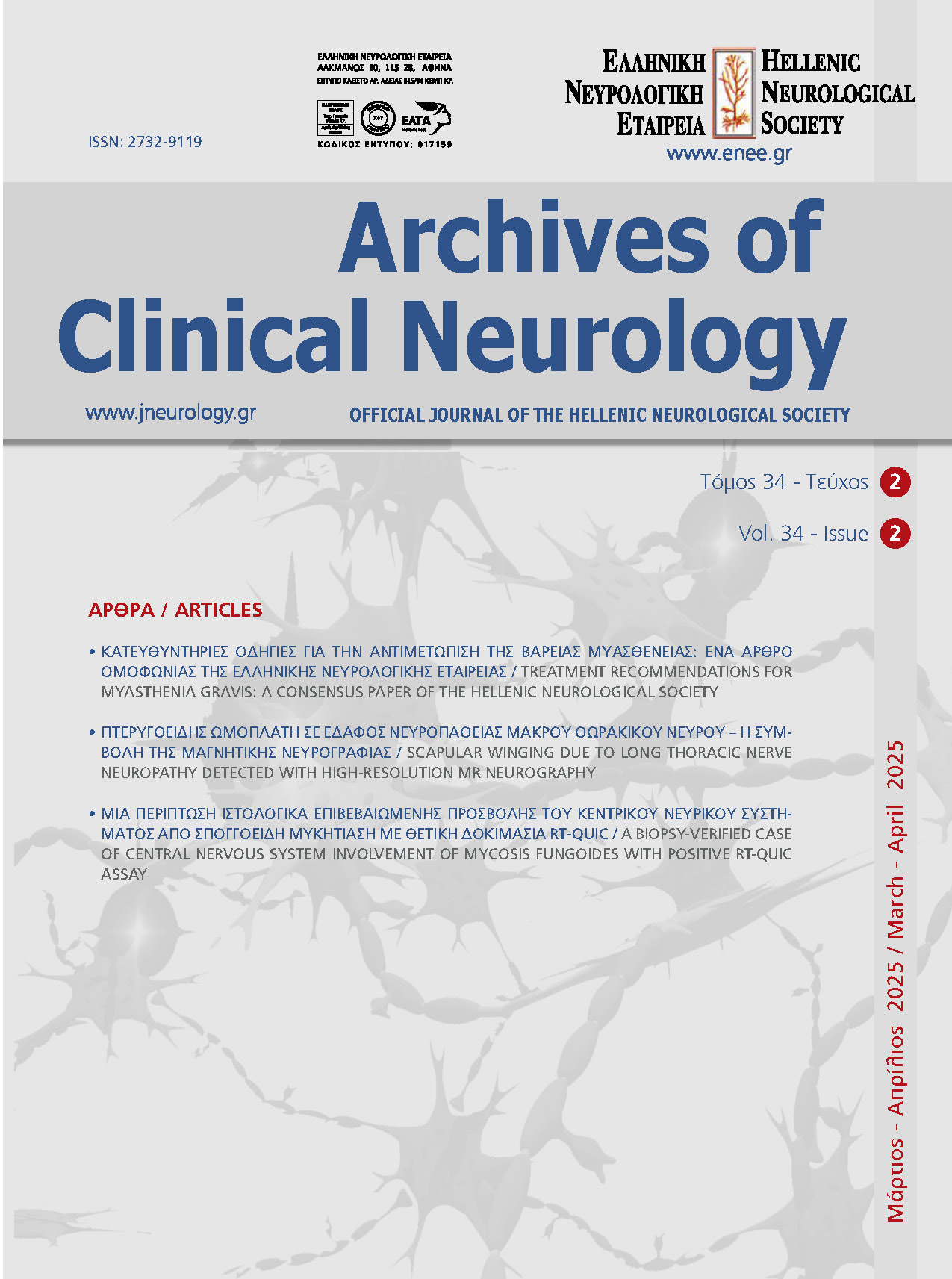THE SIGNIFICANCE OF CERVICAL AND TRANSCRANIAL ULTRASOUND IN THE ACUTE AND SUBACUTE PHASE OF DISSECTION OF THE CAROTID ARTERIES. A DIDACTIC EXAMPLE.
Keywords:
Διακρανιακός υπέρηχος, υπέρηχος καρωτίδων, διαχωριστικό ανεύρυσμα καρωτίδας, παράπλευρη κυκλοφορία, ισχαιμικό αγγειακό εγκεφαλικό επεισόδιοAbstract
Dissection of the carotid arteries is a common cause of ischemic stroke among younger patients. In many cases, a dissection of the carotid artery may lead to (pseudo-)occlusion of the affected vessel. Moreover, an initially occluded artery may be recanalized as the wall hematoma is absorbed and reduced in volume. On the contrary, a dissected artery may later be occluded following an expansion of the initial wall hematoma or the formation of an intraluminal thrombus due to intraluminal low-flow condition. In addition, risk of a consequent stroke may as well be related to hemodynamic insufficiency due to a stenosis or occlusion. The attribution of collateral arterial networks as well as flow parameters in the affected vessels may help the clinician estimate the risk of stroke due to insufficient blood perfusion. Although CTA and MRA of the cervical arteries may reveal or confirm the diagnosis of a cervical artery dissection, they lack the ability to inform as regarding hemodynamic changes, while their use as a follow-up tool is limited. Ultrasound of the cervical and intracranial arteries on the contrary is an excellent option, which can be repeatedly performed to follow a cervical artery dissection allowing the clinician to control for ongoing changes of the dissected artery and their consequences in the hemodynamic properties of the subsequent arteries. Here we present a patient with rapid evolution of dissection of carotid artery, as well as the therapeutic decisions in accordance to ultrasound findings.


